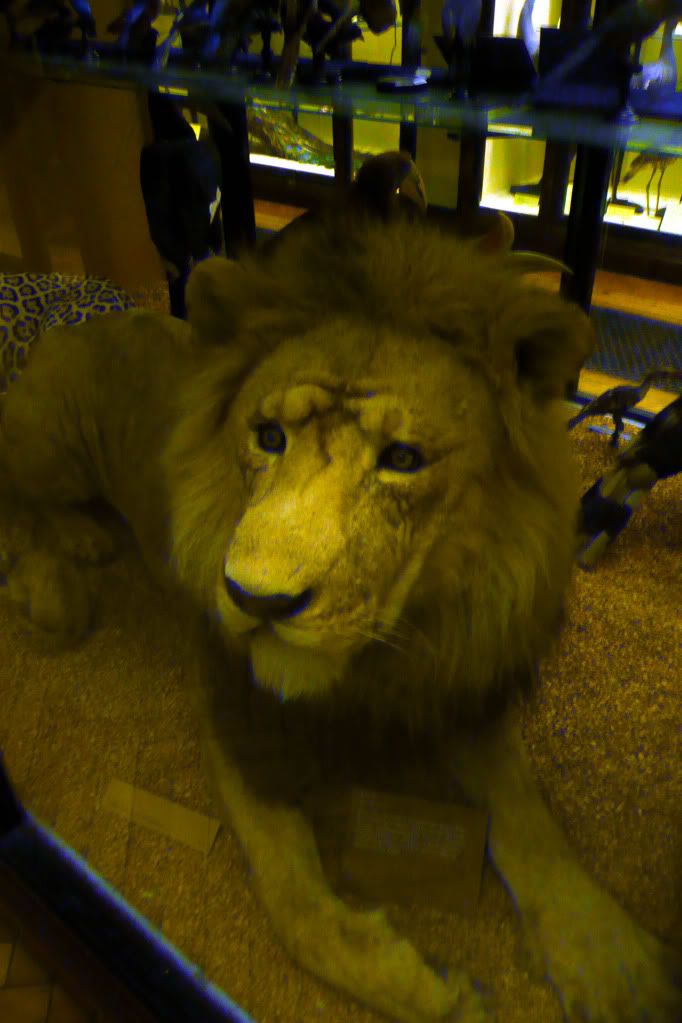Walter Rothschild was an eccentric, in the only way a Victorian from a very wealthy banking family could be. Having failed to make the grade in the family's bank he dedicated his life to amassing an extraordinary collection of dead animals, including:
- 2000 mammals
- 2000 birds
- 2,000,000 butterflies and moths
- 300,000 beetles
- 300,000 bird skins
- 200,000 bird eggs.
Spread over five floors the museum is a jaw dropping monument to one man's obsession with killing and stuffing animals.
.
.
Some of these seem to be rather poorly done, rather than looking like apex predators, the lion and polar bear just look like giant soft toys:
.
.
In his book, A short history of nearly everything, Bill Bryson describes the sad story of the lesser koa finch, a small Hawaiian bird; only one has ever been seen and this was when it was shot for Rothschild's collection.
The finch, along with the majority of Rothschild's bird collection, was sold to the American Museum of Natural History in order to pay off a woman who had been blackmailing him for years. Even so, most of his British bird collection remains at Tring, including this family of grey partridges:
.
.
It's easy to be critical of Rothschild and is obsession with killing and stuffing animals, certainly the mountain gorilla would be laughable if wasn't so tragic. But employed skilled zoologists, entomologists and ornithologists who helped him catalogue the collection, and in the process discover over 5000 new species, and published 1,700 scientific books.
Even today, the museum plays an important role for illustrators of field guides and for helping to identify recently discovered birds, like the Indian warbler.




No comments:
Post a Comment